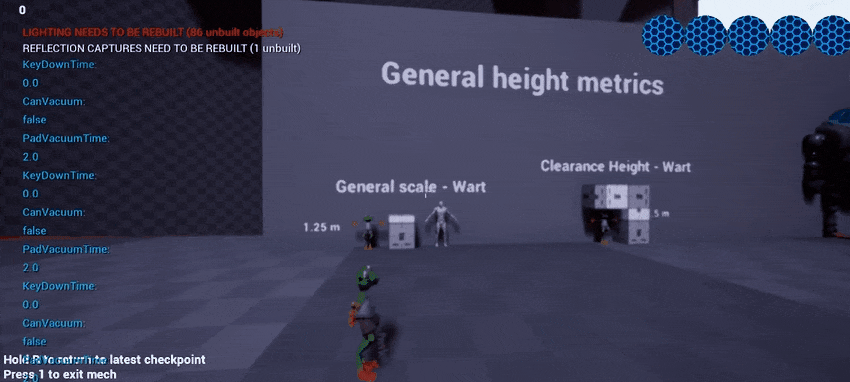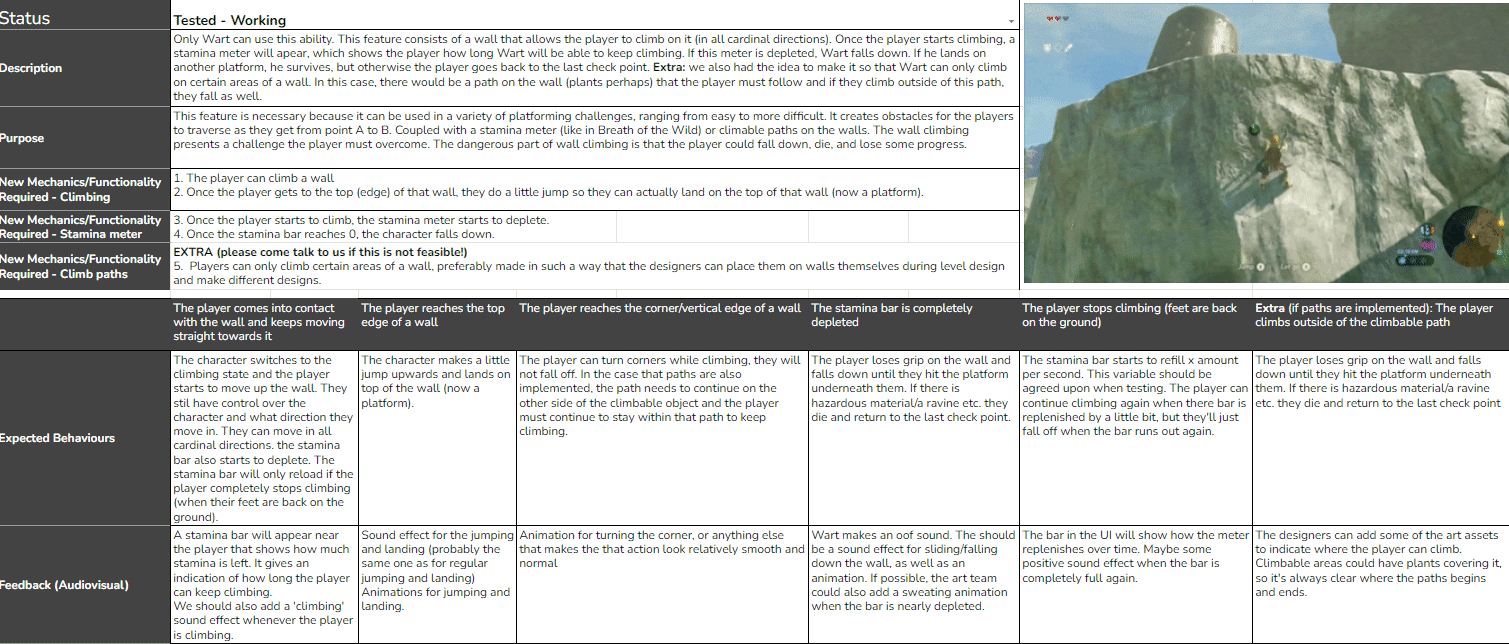top of page

Finders Keepers
Project information
Project details
Engine: Unreal Engine 4
Genre: Platformer
Project duration: 5 weeks
Project size: 9
Status: Released on Itch.io
Project summary
The platformer game where you play as a frog who controls a mech. Yup, a frog in a mech. Now shoot those launchpads, rocket jump up and climb your way onto that big tower. The loot will be worth it... or not, it's about the journey, right?
Project info
my contributions / responsibilities
Level designer
-
Developed the overall game structure, pacing and level composition
-
Built all of the level sections for Wart (frog character): roughly 50% of the level content
-
Playtested and iterated extensively to ensure the intended player experience was reached
-
Collaborated closely with environment artists to ensure blockout was converted into final art successfully
Game designer
-
Was actively involved with the creative process: going from a vague concept to a solid plan
-
Developed character abilities using a feature breakdown document
-
Worked on the 3C's of Wart (character, camera, controls)
-
Created screenshakes to enhance game juice when shooting launchpads and falling from heights
-
QA and playtest the full game
-
Help with bugfixing
Contributions
-
Finders Keepers's gameloop is about switching between two characters, Wart (frog) and Poko (mech) in order to make progress. Poko cannot access interior spaces and Wart cannot scale the buildings on his own.
-
I built all of Wart's level sections (4 in total), which accounted for 50% of the playable game.
-
I also set up the tall buildings that form the game's overall structure and I made sure that Wart and Poko's sections connected correctly.

WART'S JOURNEY [TUTORIAL]
Starts at 00:00
-
Introduces the player to Wart the frog and the traversal mechanics
-
Introduces his movement speed, jump velocity and height
-
Abilities: firing, using and re-charging bounce pads and climbing on vine walls.

WART'S FIRST LOOP
Starts at 01:50
-
This section introduces the player to the gameplay loop: using Wart to open paths that Poko cannot access otherwise.
-
Contains longer jumps, and multiple angled bounce pads after one another. As well as the first climbable wall with a path.

FEAR OF HEIGHTS
Starts at 03:40
-
Increases the difficulty of challenges introduced earlier.
-
Contains larger gaps, more consecutive bounce pads without pauses, and the climbable wall challenges are longer, so the player needs to manage their stamina.

WALL OF FATIGUE
Starts at 07:55
-
Contains challenges that test the player's skill and speed when wall climbing/jumping pillars, and also by having them do longer jump pad sections without pauses in between.
level overview
from concept to product
IDEA SKETCH
IDEA TO EARLY BLOCKOUT


BLOCKOUT TO FINAL ART
RESULT IN THE FINAL GAME


PLAYER CHARACTER METRICS
-
In order to make sure all teammembers were using the right metrics when building challenges or adjusting content, I made an overview of all metrics pertaining to heights and movement.
-
I was also responsible for the character metrics of Wart (the Frog character). After we had settled on the movement metrics for him, I made an overview of jump heights and distances based on speed
metrics: heights and poko

metrics: warts jump heights & distances

Gymlevel - levelkit - experimentation
-
The gymlevel is where I kept the metrics and levelkit overview. The levelkit was created by our environment artist Thijs de Haas, and it was my responsibility to make sure my blockouts were correctly switched out with the final assets without it affecting gameplay.
-
All of the scenes I built for the game, I first prototyped in the gym. This is where I would playtest and iterate, and if a section was ready, I would transfer those elements over to the actual game level.
game feature example
-
One of the features I wrote a breakdown for was wall-climbing.
-
I wrote this breakdown to communicate my design intentions with our programming team.
-
I explained its purpose within the game, required functionality, expected behaviours in different situations, and the needed audiovisual feedback.

-
When the base functionality was implemented by programming, I started to experiment with possibilities.
-
I also figured out and balanced difficulty: how long and complex should a path be with our current stamina meter to make a challenge easy or difficult to complete?


-
Eventually the art assets were also implemented and multiple wall-climbing challenges were implemented in the final game, ranging from easy to difficult.
-
Difficulty was not only introduced through path langth and complexity, but also through path width and additional challenges like making the player first jump over a gap and landing on a specific part of the wall.

bottom of page











